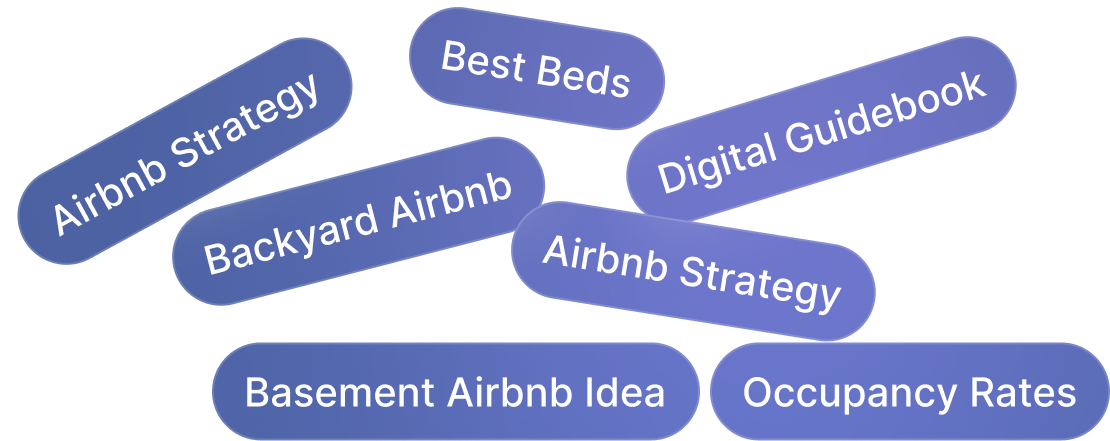Short-term rentals offer guests a unique opportunity to experience local living and, for hosts, create additional income. One challenging yet popular setup is a shared kitchen. Whether you’re hosting guests in a private room within your home or managing a multi-unit rental where guests share common areas, sharing a kitchen requires careful thought and planning to ensure smooth operations for both you and your guests. This guide will provide hosts and property managers with actionable tips on how to create a welcoming, functional, and efficient shared kitchen that leaves your guests raving about their experience.
Host Tools provides an automated, unified calendar for short-term rental hosts, allowing you to seamlessly list on all major channels. Start your free trial today!
Why a Shared Kitchen Space Can Be a Great Asset for Your Rental
A shared kitchen may sound challenging, but it offers tremendous value to short-term rental hosts:
- Attracts Budget-Conscious Travelers: Guests looking to save money prefer accommodations where they can cook their own meals.
- Promotes Longer Stays: With access to a kitchen, your property becomes a more viable option for extended trips.
- Fosters Community: A shared kitchen gives guests a chance to interact, which many solo travelers enjoy. It creates a welcoming atmosphere that can lead to 5-star reviews.
- Maximizes Space: For properties with limited room, a shared kitchen ensures guests still enjoy one of the comforts of home.
However, without clear planning, a shared kitchen can quickly go from a benefit to a headache. That’s why you need a strategy.
Set the Stage for Success with Clear Rules
Setting clear expectations for the use of the shared kitchen is essential. This helps avoid conflicts, ensures cleanliness, and creates a positive experience for all guests.
1. Write kitchen rules in the listing description or house rules
Transparency begins before the booking. Use your listing to outline:
- Times the kitchen can be used.
- Basic guidelines, such as cleaning up after use, respecting other guests’ belongings, and sharing space fairly.
- Whether you provide any basic ingredients or expect guests to bring their own.
Example:
“We’re excited to share our snack-friendly kitchen with you! Please clean up immediately after cooking, label any items you store in the fridge, and ensure noise is kept to a minimum after 10 PM.”
2. Post a copy of the rules in the kitchen
A laminated, easy-to-read copy of the house rules prominently displayed in the kitchen serves as a helpful reminder for guests. Ensure the tone of the rules is polite yet firm to maintain clarity without sounding overly restrictive.
3. Label everything clearly
One of the simplest ways to avoid confusion is to use labels:
- Allocate separate shelves or storage space like bins in the fridge and pantry for each guest.
- Label provided items (e.g., “Host’s coffee—free to use” or “Host’s personal items—please do not use”).
Clear labels help prevent accidental use of another guest’s items and reduce waste.
Equip Your Kitchen with the Essentials
A shared kitchen doesn’t need to be filled with luxury items, but it does need functionality and durability. Keep your kitchen welcoming and well-stocked with these essentials:
1. Provide basic cooking tools
Make it easy for guests to cook meals with the basics, including:
- Pots and pans of varying sizes.
- Cooking utensils (spatulas, ladles, tongs).
- Sharp knives.
- Cutting boards.
2. Offer shared supplies
Guests often appreciate when hosts provide essential cooking ingredients. Stock your kitchen with:
- Salt, pepper, and common spices.
- Cooking oil.
- Tea and coffee.
Store these in easy-to-use dispensers rather than bulky supermarket packaging to avoid waste.
3. Invest in quality appliances
If possible, include these appliances to make the kitchen more functional and guest-friendly:
- A microwave for quick reheats.
- A refrigerator with designated space for each guest.
- A toaster and/or toaster oven.
- An electric kettle for tea and coffee drinkers.
- A dishwasher to help keep things simple.
Lastly, ensure all your appliances are in good working condition. Regular maintenance prevents guest frustration.
Keep It Clean and Organized
A shared kitchen’s usability depends largely on cleanliness and organization. Nobody enjoys cooking in a chaotic or unhygienic environment.
1. Provide cleaning supplies
Equip the kitchen with easy-to-reach cleaning supplies:
- Dish soap and sponges.
- A drying rack for washed utensils.
- Wipes or hand towels for quick cleanups.
Guests will be more likely to leave the kitchen clean if the tools to do so are readily accessible.
2. Schedule a cleaning routine
While guests are expected to tidy up after themselves, it’s helpful to schedule regular cleanings to ensure the space remains hygienic. If you’re managing multiple rental properties, consider hiring a cleaning service to manage this for you.
3. Encourage accountability
Provide containers for recyclables, compost, and trash, and label them accordingly. Encourage guests to dispose of their food waste properly and to take out the trash if it becomes necessary (and you’re not home) during their stay.
Create a Welcoming Atmosphere
A shared kitchen should feel less like a communal chore and more like an opportunity for guests to enjoy their stay. Here’s how to make the space inviting:
1. Add personal rouches
Small details make your kitchen feel more like home:
- A small bouquet of fresh flowers or an herb-potted plant.
- A chalkboard or whiteboard welcoming guests with their name or a simple message like “Bon Appétit!”
- A handwritten note with restaurant recommendations for travelers seeking a night out.
2. Encourage social interaction
Properties with shared kitchens can foster a sense of community:
- Organize optional “family meals” where guests can prepare a meal together.
- Create an “about you” board where guests can write something fun about themselves.
- Stock board games or books nearby for those who’d love to linger and chat post-dinner.
Communicate and Address Concerns Promptly
No matter how well you plan, misunderstandings or issues can arise. Encourage open communication by:
- Being available and responsive to messages through the rental platform.
- Checking in via text or email to ensure guests are comfortable with the arrangement.
- Including emergency contact numbers for any urgent assistance related to the kitchen setup.
Know the Legal Regulations
Lastly, check on any local laws or regulations concerning shared kitchen spaces in short-term rentals. For example:
- Do you need a specific license to run a short-term rental with shared spaces?
- Are there health and safety standards that must be met?
Staying compliant will protect you from legal complications and reinforce your professionalism as a host.
Final Thoughts
A shared kitchen, thoughtfully managed, can elevate your short-term rental’s value and guest experience. By providing clear ground rules, equipping the space adequately, maintaining cleanliness, and fostering a welcoming vibe, you’ll set yourself up for glowing reviews and meet amazing travelers from all walks of life.
If you’re ready to take hosting to the next level, be sure to start a 14-day free trial with Host Tools. Our platform automates much of the hosting process so you can focus on the things that really matter – like getting to know your guests!
Host Tools provides an automated, unified calendar for short-term rental hosts, allowing you to seamlessly list on all major channels. Start your free trial today!



